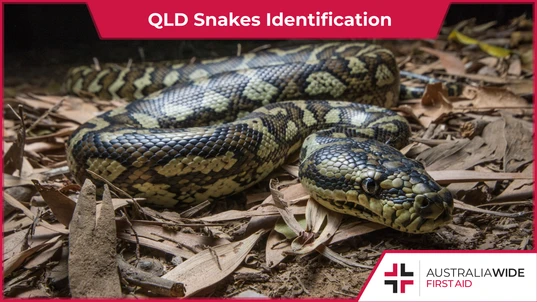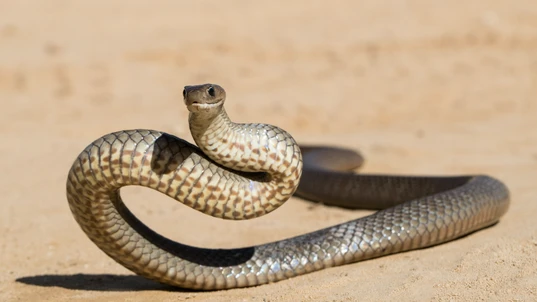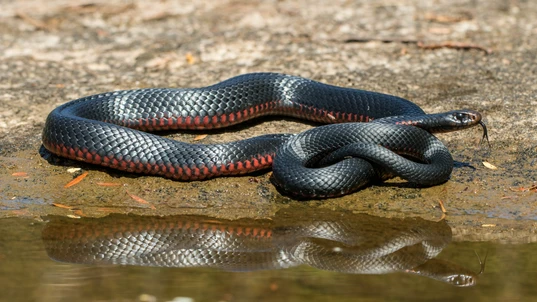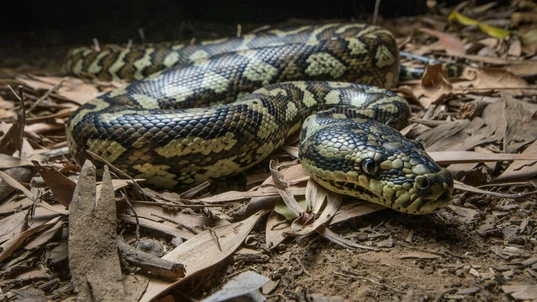QLD Snakes Identification: A Guide

Bites and Stings

South East Queensland is home to 56 snake species, some of which are the most venomous in Australia. As such, it is important to know what snakes may be present in and around your home and backyard.
South East Queensland is home to a diverse range of snakes such as the Eastern brown, Red-bellied black and Coastal carpet python. While the Eastern brown and Red-bellied black are some of the most venomous snakes in Australia, they only bite if provoked or threatened. Knowing what snakes are present around your home and backyard is important. Should you encounter a snake, contact a professional snake catcher, rather than trying to deal with it by yourself. If you are bitten by a snake, seek medical attention. Instead of trying to capture or kill it, try to take a photo for further identification by a professional. Read on to learn about what to do if you see an Eastern brown, Red-bellied black or Coastal carpet python and first aid procedure for snake bites. We also cover snake bite first aid in the following first aid courses: To book a first aid course near you, simply head to our Locations page and follow the prompts.
The Eastern brown snake is the second most venomous snake in Australia. They are not as aggressive as they are made out to be. Rather, they are a nervous and alert species that will generally only strike when surprised or cornered.
The Eastern brown snake
The Eastern brown snake is the second most venomous snake in Australia. Usually shy and timid in nature, the Eastern brown quickly puts on an impressive show of aggression when cornered or threatened. Eastern brown snakes are medium-sized and slender with an indistinct neck and a small head. They come in almost any shade of brown - from dark or light tan to a burnt orange hue. Eastern brown snakes can be difficult to identify. Take a photo rather than attempting to capture, kill, or get close to it. Eastern brown snakes hunt, chase and feed on frogs, reptiles, birds, mammals, rats and mice. Eastern brown snakes tend to live in open landscapes and, unlike other native creatures, have flourished in land clearing for agricultural purposes. They readily inhabit human residential homes where new suburban areas are encroaching onto farmland, and have no problem finding shelter or hunting in suburban homes. A common reaction to snakes is to try to kill them. Don’t. This is when most people get bitten by snakes. The Eastern brown snake bite is generally painless and difficult to detect, but is very serious and causes more deaths than any other snake species in Australia. Take a photo of the snake and call a professional snake catcher. Avoid threatening the snake - they are not the lethal aggressive creatures often made out to be. A bite from an Eastern brown snake can cause progressive paralysis and excessive bleeding. Seek immediate medical attention if you are bitten - even if you haven’t identified it is a venomous snake.
The Red-bellied black snake is a shy species that will generally only strike when under severe harassment. In the face of danger, they generally prefer to flee towards the nearest retreat or freeze to avoid detection.
The Red-bellied black snake
The Red-bellied black snake is a reclusive, shy snake that also puts on a fearsomely aggressive show when under threat. Along with the Eastern brown, it is frequently encountered by humans along the coast of Queensland. With a glossy black body, a red or pink belly, and a pale snout tip, the Red-bellied black has a venomous bite that requires immediate treatment. These beautiful creatures love sunshine and water and can be found around warm, swampy drainage canals and dams. They regulate their body temperature by moving in and out of the sun throughout the day. Red-bellied black snakes will dive into water when hunted and can submerge for as long as 23 minutes. Do not try to kill a Red-bellied black, instead, take a photo and call a professional snake catcher. A Red-bellied black snake will only bite unless severely attacked and will either choose to flee rather than fight, potentially mock an attack, or stage a decoy by softly moving their tail. Red-bellied black snake bites can cause bleeding and/or swelling at the bite site, nausea, vomiting, headache, abdominal pain, diarrhoea, sweating, local or general muscle pain and weakness, and red-brown urine. Children, dogs and cats are at greater health risks from a Red-bellied black snake bite. Seek immediate medical attention if you are bitten - even if you haven’t identified it as venomous.
The Coastal carpet python is a large, heavy-bodied snake that occupies a variety of habitats in South East Queensland, including rainforest and wet sclerophyll forests. Though non venomous, their bites can cause significant lacerations or punctures.
The Coastal carpet python
The Coastal carpet python is a large, heavy snake often spotted along the rainforest regions of coastal Queensland. While foreboding in size, the Coastal carpet python is non venomous and delivers instead a sharp punctured bite with its razor sharp teeth. Olive-green with pale, dark-edged blotches and bands and a creamy white belly, Coastal carpet pythons can weigh up to 10kg. Coastal carpet pythons thrive in forests close to water. Coastal carpet pythons can end up in gutters and pipes around houses where they find possums, birds, rats and mice. They have been known to eat cats, small dogs, pet birds, and even wallabies. They feed via constriction, slowly suffocating, swallowing, and digesting their prey. To remove a Coastal carpet python, call a professional snake catcher and avoid threatening the snake to keep your family and pets safe. A Coastal carpet python is not venomous, but injury can occur from their razor sharp teeth or if they attempt to constrict you. Take a photo of the snake and seek medical attention.First aid for snake bites
If you are bitten by a snake, even if you don’t know if it is venomous or not, it is crucial to act as soon as possible to stop any potential venom from circulating through the body. Call Triple Zero (000) for an ambulance and follow the first aid procedure listed in our Snake bite identify and treat article.Final thoughts
According to Queensland Museum, South East Queensland is home to 56 snake species, some of which are the most venomous in Australia. Avoid threatening snakes, take a photo of it instead and call a professional snake catcher to remove it. In the event of a snake bite, seek immediate medical attention. Always assume you have been bitten by a venomous snake. And to learn how to treat a snake bite, attend one of our following first aid courses: We hold these first aid courses throughout South East Queensland, including: To book a first aid course near you, simply head to our Locations page and follow the prompts.
Originally published at
https://www.australiawidefirstaid.com.au/resources/qld-snakes-identification
as part of the Australia Wide First Aid Articles Library









